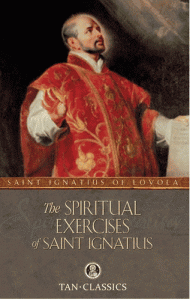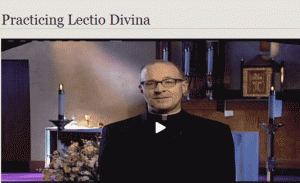While Keller claims to be a Reformed Protestant, his writings reveal a profound empathy with the Roman Catholic Church. In The Reason for God (2008) he refers to the Catholic Church as “the largest church in the world”.[2] He explains that he believes in a broad definition of Christianity that includes the Church of Rome. He says that “all Orthodox, Catholic and Protestant Christians assent together to the great creeds.”[3] And this, in Keller’s mind, means that Roman Catholics are real Christians. He frequently quotes from Roman Catholic sources and authors.
Mysticism in Keller’s Church
The fruit of Keller’s embrace of the Church of Rome is the promotion Catholic mystical practices in his Redeemer Church. In 2009, an article posted on Surph’s Side blog drew attention to what is going on at Redeemer Church. Incredibly, Keller’s Presbyterian Church was teaching their flock how to practice the spirituality of ‘The Way of the Monk’, a method of prayer and worship that is grounded in Catholic mysticism. Here is the link to the article:
http://surphside.blogspot.com/2009/06/tim-kellers-redeemer-presbyterian.html
One of the Redeemer flock was so disturbed by what was happening that she wrote: “I had to finally leave Redeemer because I learned they are holding classes on how to pray by way of lectio divinia, contemplative prayer/meditation, and even how to create “your own private monastery” (class was called The Way of the Monk). This most definitely did/does not sit well with me and I wrote a letter to the Pastors and Elders of the church about my concerns a couple of months ago but have not yet received a response.” http://surphside.blogspot.com/2009/06/tim-keller-following-in-warrens.html
Here is how Redeemer Church promoted its workshops:
The Way of the Monk (April 28, May 5 & 12)
“Do you long for the great theology in your head to be more real to your heart? Come discover age-old methods of contemplative prayer and worship that can help you encounter Christ in a more intimate, experiential way. In this hands-on workshop, you will experience the ancient art of chanting the Psalms (they were meant to be sung!), embark on a practice of authentic Christian meditation, discover how a simple, time-honored tool can help unleash the prayer warrior in you, learn what a typical monastic day is like and how you can make your own, private retreat at a monastery, and much more!”
Centering Prayer
“In this session, we will focus on Centering Prayer, an age-old practice of authentic Christian meditation. We will cover history, technique, obstacles, and how to overcome them. We will also devote ample time to actual practice and Q &A. We will learn how to properly prepare by grounding ourselves in God’s Word. As a prelude, we will consider the purpose, power, and biblical precedent for silence, solitude, and contemplative practice.”
Prayer Rope
“Finally…help for fidgety hands and distracted minds! In this session, we will focus on the use of a prayer rope, a practice of prayer that engages the whole person. We’ll begin by viewing a brief video that demonstrates the “Chaplet of the Divine Mercy,” a particular method of using a prayer rope. We will then do our own investigation of Scripture to determine the meaning and power of God’s “mercy” and the resulting implications for rich, yet highly accessible intercessory prayer. We’ll also cover history, purpose, technique, and devote ample time to actual practice and Q &A.”
Lectio Divina
Under the heading of recommended prayer resources,Redeemer Church is currently promoting Lectio Divina – “Divine Reading”
According to the Redeemer website: “Lectio Divina, or Divine Reading involves meditative listening to the reading, out loud and slowly, of a short passage or a few isolated verses of Scripture. It can be down on your own or with a group. Those who listen are encouraged to set aside analysis, and what they “know” already about the passage, seeking instead to open themselves to God’s Word, listen with their hearts and receive it expectantly and passively. They then attend to what they receive from God. God’s Word is received personally, as an individualized gift to each person.”
The article goes on to explain in some detail how to practice Lectio Divina on your own and in a group.
http://www.redeemer.com/connect/prayer/lectio_divina.html
Meditation: Not So Mysterious
Another recommended prayer resource is referred to as biblical meditation. The congregation is encouraged to read Jan Johnson’s article Meditation: Not So Mysterious which shows two ways to move Scripture off the page and into your life. Jan Johnson is a trained spiritual director, writer and retreat speaker that specialises in spiritual transformation. In her biography, Jan gives as her teaching experience: “Lectio divina instructor for Dallas Willard’s Fuller Seminary class: Spirituality and Ministry; Senior Teaching Fellow and Formation Coordinator, Renovaré Institute.”
See a video of Jan explaining her method of spiritual transformation: http://youtu.be/c9hGRVYCEqs
http://www.redeemer.com/connect/prayer/prayer_johnson_article.html
Spiritual Exercises
Jan’s first technique is Spiritual Exercises. She explains: “One of the best-known ways to ponder God’s character, works, and ways is a format originated by Ignatius Loyola, founder of the Jesuits. Loyola’s methods, recorded in his book Spiritual Exercises, have been used for hundreds of years. He urged people to enter into Scripture with all five senses: sight, hearing, taste, touch, and smell.”
 Jan explains: “As I meditate on a passage, I often ask myself, What did the biblical scene look like? At first, this was difficult. But then I decided to pretend I was Cecil B. DeMille creating a scene for a biblical epic such as The Ten Commandments. When I meditated on the transfiguration of Christ, I tried to imagine Jesus’ radiance. This passage required that I bring in Steven Spielberg too, adding the special effects of lightning-bright clothes. Then as I imagined the scene, I wondered (as a skilled movie director would), What was Jesus doing when His appearance changed? I peeked at the original script and found that Jesus was praying (Lk. 9:29). I immediately prostrated myself on the floor and said to God, ‘As I pray, change me, too. Make me the person You wish me to be.’ ”
Jan explains: “As I meditate on a passage, I often ask myself, What did the biblical scene look like? At first, this was difficult. But then I decided to pretend I was Cecil B. DeMille creating a scene for a biblical epic such as The Ten Commandments. When I meditated on the transfiguration of Christ, I tried to imagine Jesus’ radiance. This passage required that I bring in Steven Spielberg too, adding the special effects of lightning-bright clothes. Then as I imagined the scene, I wondered (as a skilled movie director would), What was Jesus doing when His appearance changed? I peeked at the original script and found that Jesus was praying (Lk. 9:29). I immediately prostrated myself on the floor and said to God, ‘As I pray, change me, too. Make me the person You wish me to be.’ ”
Lectio Divina
Jan’s second technique is Lectio Divina. She explain: “As I tried to meditate on the discourse and poetic texts, such as the New Testament letters and Old Testament poets and prophets,
I found that another classical method helped me: Lectio Divina. This kind of meditation has been used widely among believers since the sixth century. Lectio Divina consists of four parts: reading a passage, meditating on that passage, praying, and contemplating God. After the Scripture is read aloud, participants wait for a word, phrase, or image from the passage to emerge and stay with them. From this phrase or image, the participant asks, What does this passage say to me right now? (Bible study before meditating is important preparatory work because it asks, What did the passage say to listeners then? This keeps us from coming up with absurd answers to this question.)”
Comment
The significance of Keller’s promotion of Catholic mysticism in Redeemer Church is that it reveals what is really in his heart. As a Presbyterian minister of the gospel, he is prepared to lead his church into Roman mystical practices. He is even content for his congregation to learn the Spiritual Exercises of the founder of the Jesuit Order, Ignatius Loyola. Here we need to understand that the Jesuit Order, given papal authority in 1540, was committed to the restoration of the authority of the Roman Catholic Church by ruthlessly destroying the Protestant Reformation. With their vows of total obedience to the Pope and their strict military style training, the Jesuits became feared across Europeas the “storm-troopers” of the Catholic Church.[4]
But here is the real issue—Keller is promoting the mysticism of Rome while at the same time presenting himself as a Protestant theologian and leading New Calvinist. We should also remember that he is a founder member of The Gospel Coalition of evangelical churches. And so the obvious question. Does The Gospel Coalition agree with Keller’s mystical practices? On this website we have already demonstrated that Keller teaches a false gospel. And now we know why. While he claims to be a Reformed Christian with his lips, his heart appears to have turned to the Church of Rome. All the evidence before our eyes suggests that he is only pretending to be a Reformed Christian while actually promoting the Counter Reformation of the Roman Church. The apostle Paul warned the Church: “For I know this, that after my departure savage wolves will come in among you, not sparing the flock. Also from among yourselves men will rise up, speaking perverse things, to draw away the disciples after themselves” (Acts 20.29-30).
Is Tim Keller a true minister of the Gospel of Truth, or a ravenous wolf that is drawing disciples away from the faith once delivered to the saints?
You can learn more about Dr Tim Keller, Pastor Mark Driscoll and Pastor John Piper in the book, The New Calvinists (2014), published by The Wakeman Trust and Belmont House Publishing. The book is available from The Metropolitan Tabernacle bookshop or from Amazon More on John Piper and his Christian Hedonism at The Real John Piper website
[1] The Gospel Coalition website, The Gospel for All of Life: Preamble
[2] Tim Keller, The Reason for God, Hodder, 2008, p87
[3] Ibid. 116
[4] Website of Bible Questions Answered by GotQuestions.org, Question: “Who are the Jesuits, and what do they believe?”

